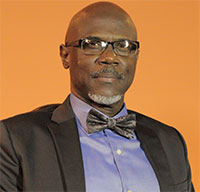…a pathway to resuscitate the Amaila Falls Hydro Project?
IN this four-part series, we will examine the Norconsult Report on the Amaila Falls Hydro

Project (AFHP). In Part I, we will look at Resuscitation of the Amaila Falls Hydro Project. In Part 2, we will examine Alternative Options for the AFHP. In Part 3, we will discuss Who Really Owns the USD 80m equity. Finally, in Part 4, we will look at the possibility of an independent power producer (IPP) and explore options for utilising the USD 80m equity.
The terms of reference and outcomes
At the outset, it seems that the principal recommendation by the Norconsult Report on its ‘Review of the Amaila Falls Hydropower Project in Guyana’, that the “AFHP [Amaila Falls Hydropower Project] should be maintained as the first major step towards Guyana’s transition to an environmentally sustainable electricity system” was in fact a fait accompli, given that one of the terms of reference (ToR) of Norconsult provided that “The outputs of this assessment will primarily benefit the Government of Guyana by confirming the feasibility of the AFHP project.” That, to our minds, was a set determination to save the AFHP.
From this perspective, it is reasonable to conclude that Norconsult has determined that the AFHP was feasible, but subject to technical upgrades necessary for complete acceptance. And, secondly, there was no ToR mandate for Norconsult to determine what the best available energy option for Guyana was. That decision, we respectively submit, rests with the Government of Guyana. I will return to the matter of technical upgrades a little later in the series.
The second important ToR is the expression that “As Norway has committed funds to the Project and the assessment, the assessment outcome will also inform the Government of Norway as well as any potential sponsors.” Again, this is a clear indication to salvage the AFHP, since they were financial and political implications for the Governments of Norway and Guyana. But, did the Government of Norway really commit funds, meaning the USD 80 million? Or isn’t it more accurate to say that the government of Guyana (GoG) committed the USD 80 million to the AFHP from accumulated payments beginning in 2009?
In fact, page 2 of the LCDS 2013, states that the “The Government [of Guyana] is investing US$80 million as equity in the project – sourced from payments accumulated since 2009 under the Guyana-Norway partnership.” Is it possible that both Governments can lay claim to this USD 80 million dollars? However, there is no doubt that the USD 80 million was assigned to the AFHP as equity. To whom this USD 80m belongs? And how and by what means it was assigned as equity are questions we will attempt to answer in this series.
The ‘Without Prejudice’ Concept
Given the fact that the GoG has pronounced significant doubt on the feasibility of the AFHP, in its current configuration, at the level of its Parliament must be seen as a statement of national parliamentary expression. We therefore suggest that any and all actions relating to the AFHP outside of the GoG parliamentary structure ought to be viewed as being done “without prejudice” to the GoG determining the future of the AFHP. No doubt, the findings of the report are meant to enable the GoG in its decision on the way forward. The key point is that the GoG will have to decide on the way forward and this decision is completely disconnected from what happens to the USD 80m equity.
Secondly, the Norconsult Report is set within the context of the LCDS. Since then, meaning May 2015 and a new government, a green economy pathway (building on the LCDS) and leading to a Green State has been adumbrated as the new Guyana development model. To this fact, the Norconsult Report could, understandably, not speak, but it remains a critical omission in the context of consolidating the LCDS by expanding towards a green economy, which is a low emissions and multi-sectoral approach. I would certainly agree that Norconsult could not take into consideration Guyana’s new course. However, the GoG will more than likely use this opportunity to ensure that future actions mirror its Green State direction. In that context, a clean and alternative low-emissions energy mix has been decided on as a pathway, while discussions on larger emissions-free energy solutions, such as hydropower development, will continue.
The 100% Renewable Energy Commitment
The 100% renewable energy commitment by 2025, referred to by the Norconsult Report, has since been clarified by the GoG to mean that ‘as far as possible, the GoG will plan on achieving a 100% renewable energy footprint by 2025’ [paraphrasing mine]. However, what is missing from the Norconsult Report is the conditional statement contained in Guyana’s iNDC submission to the United Nations Framework Convention on Climate Change (UNFCCC), which stated that “we [GoG] believe that with adequate and timely financial support, Guyana can develop a 100% renewable power supply by 2025.” There should be no doubt that Guyana did not receive adequate and timely finance and financial support included international obligatory finance. Further, the iNDC commitment to the UNFCCC is reviewable by Guyana. The GoG commitment to 100% renewable energy remains. The question is, how?
The 100% renewable-energy commitment by 2025, contained in the Guyana Power Generation System Expansion Study 2016, has to be taken into context. Firstly, its contents do not reflect the green economy pathway. Secondly, the reference to the AFHP in the Generation System Expansion Study has to seen as, an option, among options for clean and renewable energy. It is also apposite to note that there was no consensus among the review group for the Generation System Expansion Study 2016 that the AFHP was to be the GoG recommended option. What some members of the review group also recommended, was that the 2016 Generation Expansion Study should form the basis of a new study that would incorporate the green economy pathway that Guyana has since chosen.
Further, the 2014 and 2016 Generation System Expansion Study reports are already outdated in the context of solar power costs. The evidence suggests that solar power is the cheapest form of energy for developing countries, out-competing wind, natural gas, coal and others. This is reinforced by many reports, including those supported by Bloomberg and publications such as Science Alert. We would disagree that a commitment to go 100% renewable should not be based only on a single hydro project, such as the AFHP, and rather suggest an energy mix that takes into consideration Guyana’s physical and demographic peculiarities. In other words, a single hydro project is no silver bullet to Guyana’s energy solution! We have island communities that are independent of the main grid. We have coastal communities that do not benefit from our current inter-connected system. These communities can, however, benefit from energy solutions such as solar farms.
Finally, at this juncture, one may quite rightly ask this likely question. How independent, objective and facts-based was the Norconsult Report, given that it was a Norwegian consultant group, hired and paid by the Government of Norway in a matter in which the Government of Norway also has an interest? In the next article, we will examine some alternative options to the AFHP.
Mr Gary A R Best is a retired Rear Admiral and former Chief of Staff of the Guyana Defence Force. He is an Attorney at Law and the Presidential Advisor on the Environment. He is a PhD candidate at the University of the West Indies. He holds a BSc in Nautical Science (Brazil) and Masters Degrees from the University of the West Indies and the University of London. He is also an alumnus of the National Defence University and Harvard Kennedy School. His research areas include, climate change governance, climate change finance, international relations and environmental law. Comments can be sent to towardsagoodlife@gmail.com




.png)









